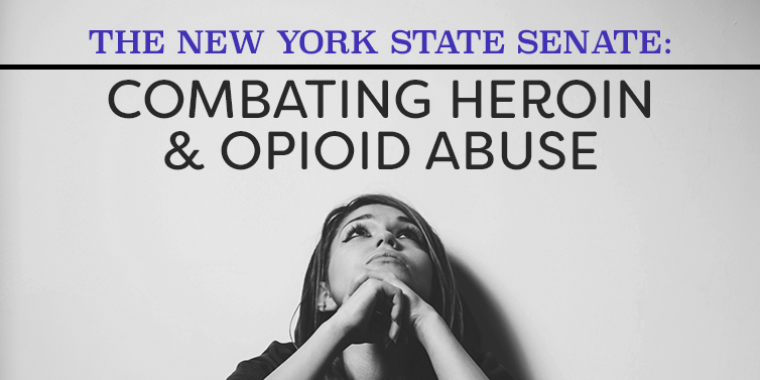
New Laws Taking Effect in 2018
December 31, 2017

NEW LAWS IN 2018
While recent tax changes in Washington are troublesome to many, beginning on January 1, several measures will take effect including, new and extended tax relief to hardworking New Yorkers, as well as access to the state’s paid family leave program, and the implementation of historic workers’ compensation reforms. Additional changes being enacted in the new year include support for vulnerable runaway and homeless youth, renewable energy measures, and increased government transparency of economic development projects, among others.
Tax Cuts and Reforms to Help Businesses
Middle Class Tax Cut: The Middle Class Tax Cut that the Senate Republican Conference fought for in 2016 takes effect Jan. 1, 2018. In the first year, 4.4 million New Yorkers will benefit from the tax cut. When fully phased in, these tax cuts will save New Yorkers $4.2 billion annually.
Year Three of the Property Tax Relief Credit: In 2015, the Senate established the Property Tax Relief Credit. Over a four-year period, STAR-eligible homeowners with incomes of $275,000 or less and who reside in property tax cap-compliant school districts will receive over $3.1 billion in rebates. The program will enter its third year in 2018, and eligible homeowners will receive an average statewide rebate check of $380. Rebates are determined as a percentage of STAR benefits, according to their federal adjusted gross income. Eligible residents in lower income brackets will continue to receive greater rebates compared to residents in higher income brackets.
Workers’ Compensation Reform: This year, the Senate successfully led the fight for the most significant workers’ compensation reform in a decade. This top Senate budget priority will help businesses, local governments, and not-for-profits continue to achieve meaningful savings, while also enhancing the protections in place for injured workers. It included a requirement for the state to issue Permanency Impairment Guidelines by Jan. 1, 2018. Drafts of the proposed guidelines are currently under review. Once finalized, the updated guidelines are expected to generate significant savings to the Workers’ Compensation system that results in a rate reduction for both public and private employers.
Child and Dependent Care Credit: This year’s budget included an expansion of the Child and Dependent Care Tax Credit for taxpayers with incomes between $50,000 and $150,000. It also expands the current cap on child care expenses from $6,000 to $9,000, depending on the number of children, for families with up to five children.
Extending Property Tax Exemption for Energy Efficiency: To promote the installation of additional types of renewable energy systems, an extension of the real property tax exemption for energy efficiency takes effect on Jan. 1. The exemption will encourage the installation of systems such as micro-hydroelectric energy systems, fuel cell electric generating systems, among others, when solar, wind and farm waste technologies are not feasible or are less appropriate.
Making New York More Affordable and More Fair
Paid Family Leave: A new Paid Family Leave program will allow working New Yorkers to spend time with a sick family member or bond with a new child. Starting Jan. 1, 2018, this program will provide eight weeks of paid leave funded through employee payroll deductions. The program will be phased-in over the next four years, and will include employees who have been in their current job for at least six months to provide protections and necessary financial resources so that family support can be available. By full implementation in 2021, the benefit will be 12 weeks at 67 percent of the employee’s weekly wage.
Supporting Fair Wages for Direct Care and Clinical Professionals: After the Senate advocated for funding that was absent from the Executive Budget proposal, the final budget provides a $146 million multi-year boost in wages to compensate direct care and other clinical professionals for the important work they do in caring for our most vulnerable adults. A 3.25 percent targeted wage increase for not-for-profit direct care and support workers under the auspices of the Office for People with Developmental Disabilities, Office of Mental Health, and Office of Alcoholism and Substance Abuse Services, begins Jan. 1, 2018. A second 3.25 percent increase is scheduled to take effect April 1, 2018 that will also include clinical workers.
Increase in State’s Minimum Wage: The statutorily scheduled increases to the minimum wage established in the FY 2017 Enacted Budget become effective Dec. 31, 2017:
- New York City Large Employers, from $11 to $13 per hour;
- New York City Small Businesses, from $10.50 to $12 per hour;
- Long Island and Westchester County, from $10 to $11 per hour; and,
- Rest of State, from $9.70 to $10.40 per hour. Hourly wages for certain fast food workers will also see an increase.
Government Transparency
Economic Development Report: A new law requires theDepartment of Economic Development (DED) to make a comprehensive report of all statewide economic development programs available to the public on the first of January each year. The report will include aggregate totals of all economic development programs administered through DED and the Urban Development Corporation including program progress, participation rates, economic impact, regional distribution, industry trends among other information. The first report is required to be available on the DED’s website on Jan. 1, 2018.
Reforming the Regulatory Process:
Three laws taking effect January 1 will help make the regulatory process in New York more transparent and accessible. The measures improve the process the state undergoes when enacting new or amending existing rules and regulations and include:
· Chapter 490, creates minimum standards for posting of information on a state website that is summarized or referenced in the State Register. The state would have to post sufficient information and complete links where the public can access the information for the proposed rule no later than the date of publication of the State Register notice. These requirements would prevent the untimely posting or removal of proposed rules and make it easier for the public to find specifics.
· Chapter 304, requires that when a proposed rule is too long to be published in the State Register, a summary statement of less than 2,000 words may still be used for publication in the Register but the Register must identify the agency website where the full text of the proposed rule is posted. No web posting is currently required for a revised rule – even if the text has been extensively revised – or for regulatory impact statements, job impact statements, or flexibility analyses for small businesses, local governments, or rural areas. Since the State Register is already available online, requiring relevant documents that are only summarized in that publication to also be posted online in its entirety will make the regulatory process in New York more transparent.
· Chapter 305, requires the full text of every emergency rule to be readily available to the public, either through publication in the State Register or posting on the applicable state agency’s website. It is particularly important for regulated parties and the public to obtain timely access to rules that required immediate adoption through an emergency rulemaking process.
Increasing Transparency of Fire Protection Contracts: A new law increases transparency in the contract negotiation process for fire protection contracts between incorporated fire companies and fire districts, towns or villages.
Other New Laws Effective January 1, 2018:
Runaway and Homeless Youth Assistance: Youth and young adults who do not have access to consistent, stable housing are a highly vulnerable population and are often trying to escape issues including neglect, abuse, domestic conflict, and sexual exploitation. Major reforms included in this year’s budget to help runaway and homeless youth will take effect January 1. Localities will be given the ability to expand the length of time that youth can receive residential services and expand the maximum age of youth eligible to receive services from 21 to 24. To better help this vulnerable population, this year’s budget also includes nearly $4.5 million for the program.
Allowing Geothermal Energy to Flourish in New York: A new law includes geothermal energy systems within the meaning of the term “qualified energy efficiency services” for purposes of on-bill financing under the Power NY Act of 2011. Geothermal energy systems provide natural and efficient energy, and although New York’s resources are extremely compatible with this type of energy, it is expensive to operate. Allowing funding from established sources will increase the use of this type of energy, creating more green jobs and reducing the amount of carbon used to heat buildings.
Extending Provisions for Long-Term Elder Care: To ensure senior citizens are receiving the best, most appropriate care, a new law extends the authorization of the long-term care ombudsman to oversee managed long-term care plans from Dec. 31, 2017 to Dec. 31, 2019.
Share this Article or Press Release
Newsroom
Go to Newsroom
Statement From Senator Elaine Phillips
May 1, 2018


